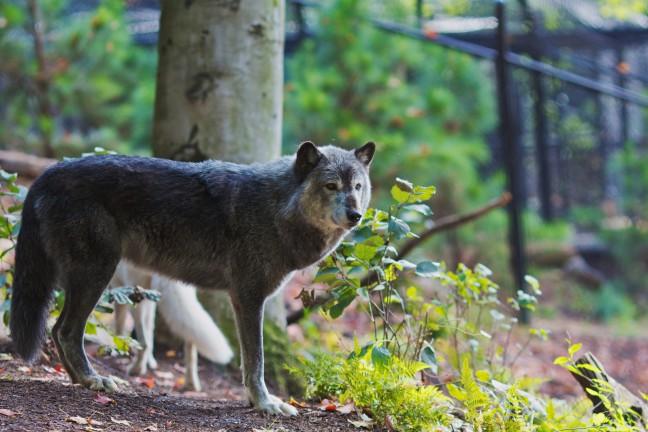Ahead of the state wolf hunt starting Tuesday, the Department of Natural Resources’ ecologists are considering increasing their original target goal population of 350 wolves after scientists statewide said it was too low.
According to a May 2013 report, the DNR estimated the wolf population was just above 800, with 157 wolves killed in the wolf hunt in the fall of 2012. Since the time of the report, the DNR’s goal of 350 has remained the same.
“There’s a huge amount of information that gets incorporated into the setting of those goals — all of the science, the ecology of the animal,” said David MacFarland, a DNR wolf and bear ecologist. “But then there’s the social concerns — wolves cause some concerns as do other species. The goal would be to reduce the concerns that go along with the animal. It’s a complex mix of ecology, population dynamics, social influences, economics — there’s just a lot that goes into it.”
He said the DNR is reconsidering its target number and does not deny the validity of the sustainable yield theory, which states that a population can only be sustained when it is at or above half of the carrying capacity of an environment.
However, MacFarland added the reconsideration will not bump up the goal to above 450.
Currently, the DNR goal is far below Wisconsin’s carrying capacity of 900 grey wolves, Tim Van Deelen, UW wildlife ecology professor, said.
Van Deelen added the sustainable yield theory is a well respected theory on which many scientists rely.
MacFarland said ecologists should still question the population numbers beyond the theory, although the theory is not debatable.
“There’s no debate about the science behind [the theory],” MacFarland said. “The question is where should it be. We currently have a management goal of 350 but that’s being reassessed.”
While the theory is accurate, Van Deelen said sustaining a population of 350 wolves would be difficult to maintain, especially with many wolves crossing the Minnesota and Michigan borders.
MacFarland also said sustaining a population more than 350 wolves would require additional monitoring.
“In a strict sense, [the population is] probably sustainable but it’s probably more of a relic population than a sustainable one,” Van Deelen said.
Minnesota and Michigan are more conservative with their wolf hunts and maintain much higher populations, according to each state’s Department of Natural Resources. Minnesota maintains a population between 1,600 and 2,200, and Michigan limited their hunt to 43 wolves in 2012, which left the state population at 658.
The Wisconsin DNR Wolf Committee, which decided the target population goal, also included interest groups that advocate hunting and trapping, while ecological scientists and wolf advocacy groups were not included, MacFarland said.
Editor’s note: This article has been corrected to reflect the accurate definition of the sustainable yield theory.


